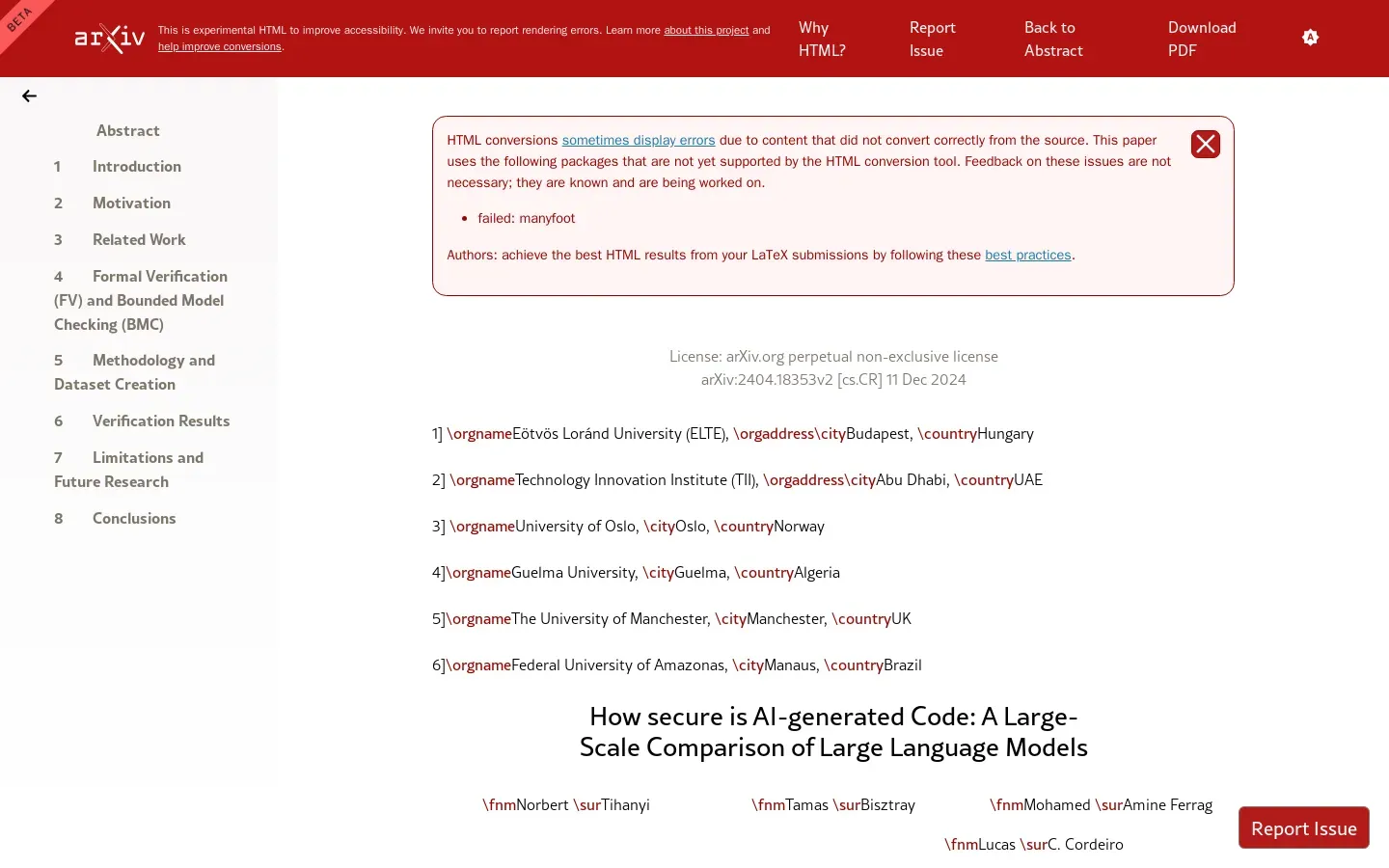
Security Vulnerabilities Identified in AI-Generated Code
/ 4 min read
Quick take - Recent research has identified significant security vulnerabilities in AI-generated C programming code, highlighting the need for improved secure coding practices and ongoing development of methodologies to address these issues.
Fast Facts
- Recent research reveals significant security vulnerabilities in AI-generated C programming code, highlighting the need for improved secure coding practices.
- Key objectives include expanding datasets for training LLMs, employing formal verification for vulnerability detection, and conducting comparative analyses of different LLMs.
- Findings indicate that without proactive measures, the risks associated with AI-generated code could escalate, compromising software security.
- Recommended strategies involve enhanced vulnerability detection tools, training in secure coding practices, and establishing standardized evaluation frameworks.
- The research emphasizes the importance of integrating security considerations into the software development lifecycle as AI usage in coding increases.
Security Vulnerabilities in AI-Generated Code: A Call for Enhanced Practices
Recent research has brought to light significant security vulnerabilities in C programming code generated by Large Language Models (LLMs). This study underscores the pressing need for improved secure coding practices within the realm of AI-generated content. As AI continues to play an increasingly pivotal role in software development, these findings highlight the necessity for ongoing research and the development of robust methodologies to effectively address these vulnerabilities.
Dataset Expansion and Diversification
One of the primary objectives of the research was to expand and diversify the datasets used for training LLMs. By broadening these datasets, researchers aim to generate a more comprehensive range of scenarios and identify potential vulnerabilities more effectively. This expansion is crucial for understanding how different data inputs can influence the security of AI-generated code.
Formal Verification for Vulnerability Detection
The study emphasizes the importance of formal verification methods as a systematic approach to identifying and addressing vulnerabilities in code produced by LLMs. Formal verification involves mathematically proving that a system adheres to certain specifications, thereby enhancing the reliability and security of AI-generated software. This method is particularly vital given the complexity and potential unpredictability of code generated by advanced AI models.
Comparative Analysis of LLMs
A comparative analysis of various LLMs was conducted to determine which models are more prone to generating vulnerable code. The research seeks to understand under what circumstances these vulnerabilities are most likely to occur. This analysis is essential for developers and organizations aiming to select the most secure models for their specific needs.
Enhanced Dataset Features for Usability
Improving dataset features is another critical aspect of this research. By making datasets more relevant and practical for real-world applications, LLMs can be better equipped to generate secure code. This focus on usability ensures that AI-generated content meets industry standards and reduces potential security risks.
Key Findings
The research highlights that vulnerabilities in AI-generated C programming code underscore a critical need for better secure coding practices. Without proactive measures, there is a risk that these vulnerabilities could escalate, potentially compromising software security on a larger scale.
Strengths and Limitations
The study’s strengths lie in its comprehensive approach to vulnerability detection and its integration of diverse methodologies. However, limitations exist, particularly concerning dataset representation and the need for further investigation into the long-term implications of AI-generated code.
Recommended Tools and Techniques
Several tools, frameworks, and techniques are recommended to address security concerns associated with AI-generated code:
-
Enhanced Vulnerability Detection Tools: These tools are essential for effectively identifying and mitigating vulnerabilities in AI-generated code.
-
Training Secure Coding Practices: Educational initiatives focused on secure coding practices are crucial for developers working with AI-generated content, enabling them to recognize potential vulnerabilities.
-
Benchmarking and Evaluation Frameworks: Establishing standardized frameworks for benchmarking and evaluating the security of LLM-generated code is vital for ongoing assessment and improvement.
-
Policy and Governance in AI Code Generation: Implementing robust policies and governance structures can guide the responsible use of LLMs in code generation, fostering a safer coding environment.
Implications and Future Directions
As AI continues to integrate into software development processes, this research underscores the importance of incorporating security considerations into every stage of development. By exploring these areas, researchers aim to significantly enhance software security practices, mitigating risks associated with LLMs in code generation. The findings lay crucial groundwork for developing safer, more reliable software solutions as reliance on AI technologies grows.



